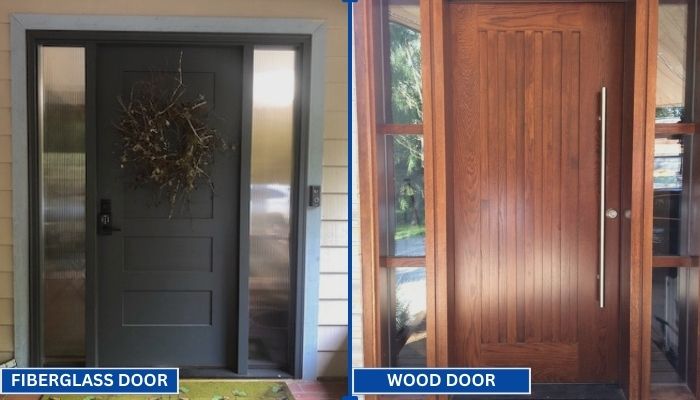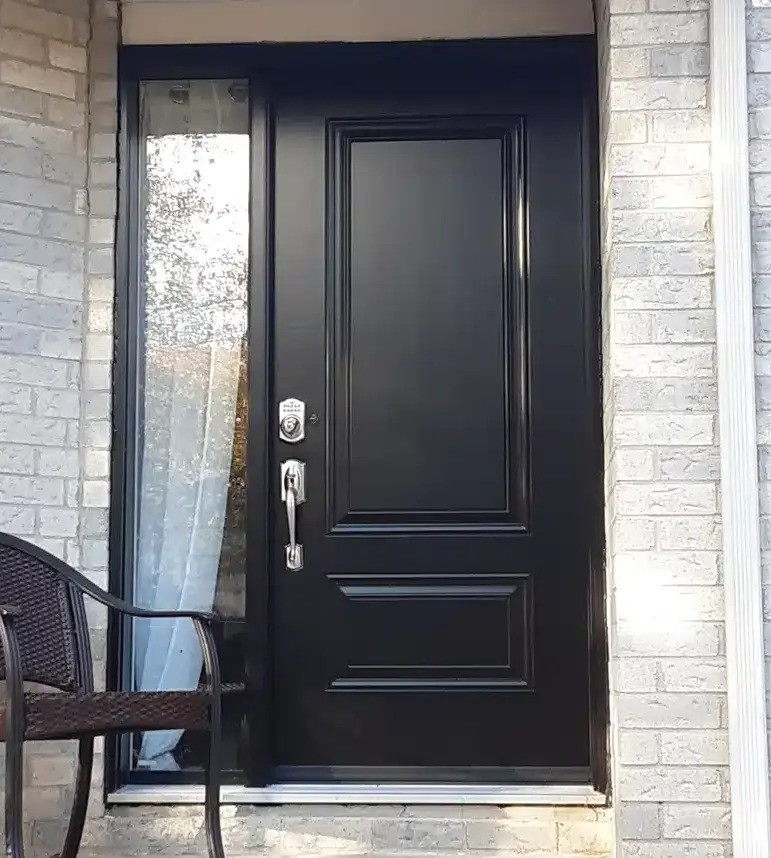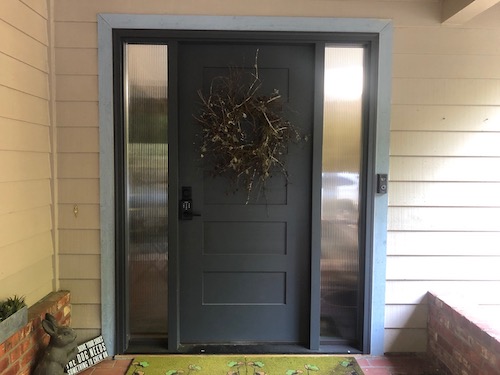Wood vs Fiberglass Door For Entry Replacement

Replacing your front door is a big decision.
Wood and fiberglass are two of the most popular materials for entry doors.
Each has its own strengths in terms of style, durability, and maintenance.
To help you choose the right one for your home, we have to go through a clear comparison.
We’ll look at the key features, pros and cons, and what to consider before making a decision.
Material Profiles
Wood Doors

Wood entry doors are made from natural hardwoods like mahogany, oak, or pine.
They offer a classic, rich look and can be customized with different stains and paints.
Some are crafted from solid wood, while others use engineered cores for added stability.
Wood doors are known for their warmth and traditional appeal but require regular maintenance to stay in good shape.
Fiberglass Doors

Fiberglass doors are built with a strong composite shell and an insulated foam core.
They can be designed with smooth finishes or realistic wood-grain textures.
This material is highly durable and resists dents, warping, and weather damage.
Fiberglass doors are ideal for homeowners looking for a low-maintenance, energy-efficient option.
Comparing Wood Door And Fiberglass Door
Wood doors and Fiberglass doors both have their unique charm, styles, and advantages. Let’s put them into a side-by-side comparison:
| Feature | Wood | Fiberglass |
|---|---|---|
| Aesthetics | Natural grain, warm and timeless | Mimics wood or offers a clean, modern finish |
| Durability | Can warp or rot without proper care | Highly resistant to moisture, insects, and temperature shifts |
| Energy Efficiency | Fair insulation but depends on sealing | Excellent insulation due to foam core |
| Maintenance | Needs regular painting or sealing | Very low maintenance, just occasional cleaning |
| Cost | Varies widely based on wood type and design | Generally more cost-effective over time |
| Installation | Flexible sizing, easier to trim or adjust | Best installed professionally due to rigid structure |
| Repairability | Easy to sand, patch, or refinish | Harder to repair, may need full replacement if damaged |
| Sustainability | Renewable and biodegradable | Made from synthetic materials, less eco-friendly |
Pros & Cons Of Wood Doors & Fiberglass Doors
With all their differences and advantages, these doors have their own challenges too.
Wood Doors
Pros:
- Offers unmatched natural beauty with rich grain patterns that can elevate curb appeal.
- Available in a wide variety of wood species, including mahogany, walnut, oak, and cherry.
- Easy to personalize with custom carving, glass inserts, or unique finishes.
- Surface damage like scratches or chips can be repaired with sanding and refinishing.
- Adds character to traditional or high-end architectural styles.
Cons:
- Highly sensitive to moisture, which can cause swelling, warping, or rotting if not properly sealed.
- Needs frequent maintenance—staining or painting every few years to protect against the elements.
- Typically more expensive than fiberglass, especially with custom work or exotic woods.
- Can attract pests like termites if not treated correctly.
- Not ideal for regions with heavy rain, humidity, or extreme temperature fluctuations.
Fiberglass Doors
Pros:
- Built to withstand harsh weather without warping, cracking, or rusting.
- Foam-filled core provides excellent insulation, helping reduce energy bills year-round.
- Very low maintenance—no need for refinishing, just occasional cleaning with soap and water.
- Available in styles that closely mimic real wood, including realistic wood-grain textures.
- Resistant to dents, scratches, and fading from sun exposure.
- Ideal for homes in humid, coastal, or high-traffic environments.
Cons:
- While visually convincing, it doesn’t fully match the natural feel of real wood.
- More difficult to modify on-site—trimming or resizing may not be possible.
- Repairs for major damage are not as easy as with wood; replacement is often the only option.
- Some lower-quality models can appear cheap or plastic-like if not chosen carefully.
Which One Should You Choose
Here’s what to think about before making your decision:
Style Preference:
Wood offers depth, texture, and craftsmanship that’s hard to match. It works well with traditional, rustic, or custom-designed homes.
Fiberglass can still look beautiful—especially premium models—but often leans more modern or practical in appearance.
Weather & Climate:
Live in an area with a lot of rain, snow, or heat? Fiberglass is better suited to extreme conditions.
Wood can work too, but only if well-sealed and regularly maintained.
Time & Maintenance
If you don’t want to worry about refinishing your door every few years, fiberglass is a better fit.
Wood will require upkeep to maintain its appearance and prevent damage.
Budget & Long-Term Value:
Wood can be a larger upfront investment and may cost more to maintain over time.
Fiberglass is often more budget-friendly in the long run due to its durability and energy efficiency.
Customization Needs:
Wood doors are easier to customize during or after installation—whether it’s resizing, refinishing, or repairing.
Fiberglass is more rigid, so you’ll need to be sure of your measurements and design choices before purchase.
Conclusion & My Recommendation
Choosing between wood and fiberglass comes down to your priorities.
Go with wood if you love natural materials, are willing to maintain it, and want a high-end, traditional look. It’s perfect for creating visual impact and adding charm, especially to older or custom homes.
Choose fiberglass if you value performance, low maintenance, and long-term durability. It’s a great all-around solution, especially in areas with tough weather or if energy savings are a priority.
In the end, both materials can be excellent choices: as long as they align with your home’s needs, your budget, and your lifestyle.











